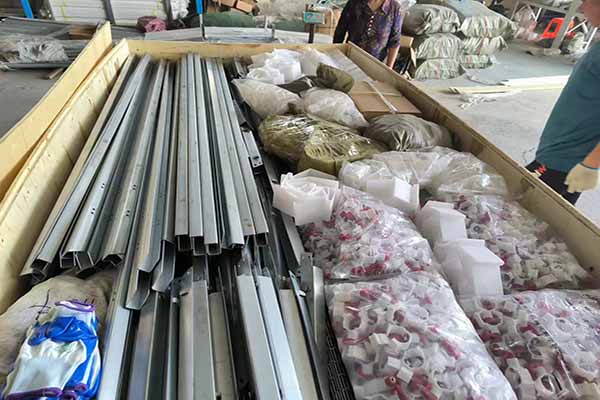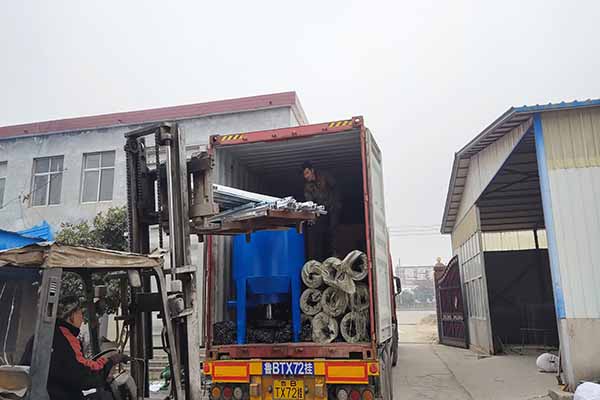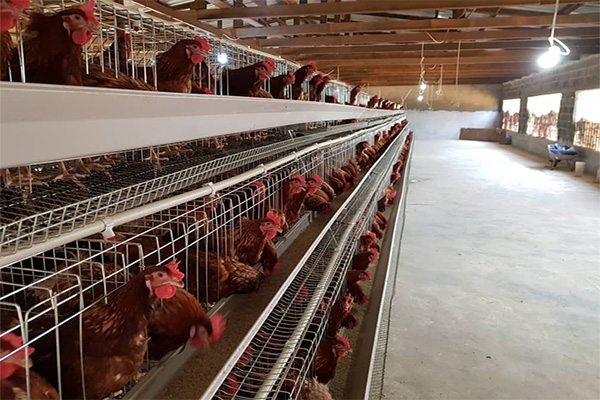Integrated Poultry Cage Systems for Egg Farming: A Comprehensive Guide
Time : 2025-06-25
Introduction
The egg farming industry has witnessed significant advancements in technology and equipment over the years. One of the most notable innovations is the integrated poultry cage systems designed specifically for egg farming. These systems are engineered to enhance productivity, ensure the health and well-being of the birds, and streamline the overall egg production process. In this article, we will delve into the intricacies of integrated poultry cage systems for egg farming, providing valuable insights and information for professionals in the industry.

Understanding Integrated Poultry Cage Systems
Integrated poultry cage systems are comprehensive solutions that encompass the entire process of egg farming, from the rearing of chicks to the collection of eggs. These systems are designed to optimize space, minimize waste, and maximize efficiency. The key components of an integrated poultry cage system include:

- Cage Design: The cage design plays a crucial role in the overall success of the system. It should provide ample space for the birds to move around, access to food and water, and be easy to clean and sanitize.
- Environmental Control: Maintaining the optimal temperature, humidity, and air quality is essential for the health of the birds. Integrated systems often include automated systems for climate control.
- Feeding and Watering Systems: Efficient feeding and watering systems are essential for the growth and health of the birds. These systems should be automated to ensure consistent access to food and water.
- Manure Management: Effective manure management is vital to prevent disease and maintain hygiene. Integrated systems typically include automated systems for manure collection and disposal.
- Monitoring and Data Analysis: Modern integrated systems are equipped with advanced monitoring systems that provide real-time data on bird health, environmental conditions, and production output.
Benefits of Integrated Poultry Cage Systems
Implementing an integrated poultry cage system in egg farming offers numerous benefits, including:
- Increased Productivity: These systems are designed to maximize egg production, resulting in higher yields per unit of space.
- Improved Bird Health: The controlled environment and automated systems help to reduce the incidence of disease and improve the overall health of the birds.
- Cost-Effectiveness: While the initial investment in an integrated system may be high, the long-term savings in terms of reduced feed costs, lower disease incidence, and improved egg quality can be significant.
- Environmental Sustainability: The efficient use of resources and reduction in waste contribute to a more sustainable egg production process.
Design Considerations for Integrated Poultry Cage Systems
When designing an integrated poultry cage system for egg farming, several factors should be considered:
- Space Utilization: The system should be designed to make the most efficient use of available space, ensuring that the birds have enough room to move and that the layout is conducive to easy cleaning and maintenance.
- Bird Species: Different bird species have different requirements. The design should be tailored to the specific needs of the birds being raised.
- Climate and Environmental Conditions: The system should be designed to accommodate the local climate and environmental conditions, ensuring that the birds are comfortable throughout the year.
- Regulatory Compliance: The system should comply with local regulations and standards for animal welfare and environmental protection.
Case Studies: Successful Implementation of Integrated Poultry Cage Systems
Several egg farming operations have successfully implemented integrated poultry cage systems, leading to improved production and profitability. Here are a few case studies:
- Case Study 1: A large-scale egg farm in Europe replaced its traditional free-range system with an integrated poultry cage system. The result was a 20% increase in egg production and a 30% reduction in feed costs.
- Case Study 2: A mid-sized egg farm in the United States upgraded its existing system with an automated feeding and watering system, resulting in a 15% increase in egg production and a 10% decrease in labor costs.
- Case Study 3: An egg farm in Asia implemented an integrated system that included a manure management system, significantly reducing the environmental impact of the operation.
Conclusion
Integrated poultry cage systems for egg farming represent a significant advancement in the industry. By combining cutting-edge technology with practical design, these systems offer a host of benefits, from increased productivity to improved bird health and environmental sustainability. As the demand for eggs continues to grow, investing in an int egrated poultry cage system is a strategic move for any egg farming operation looking to stay competitive and profitable.
egrated poultry cage system is a strategic move for any egg farming operation looking to stay competitive and profitable.











